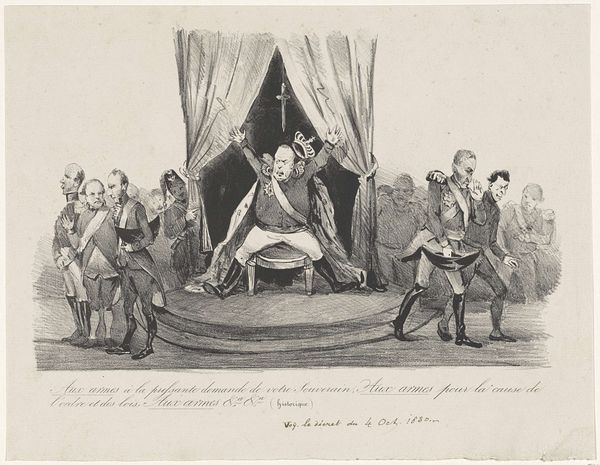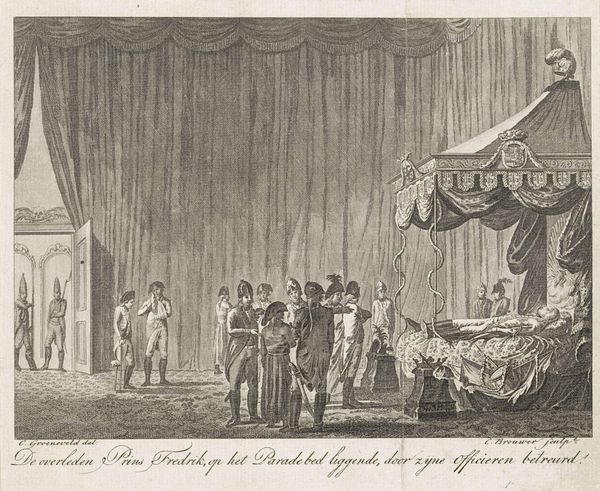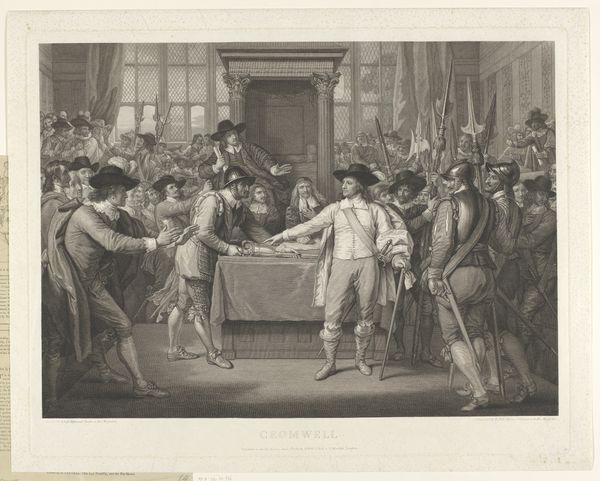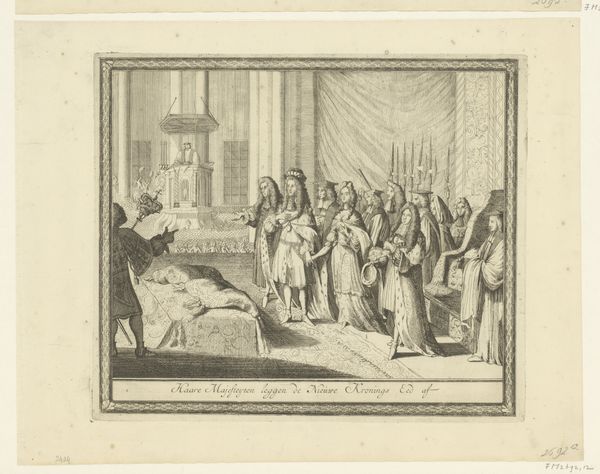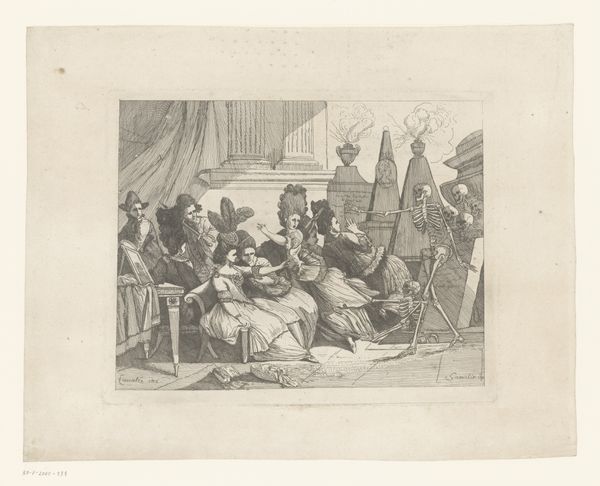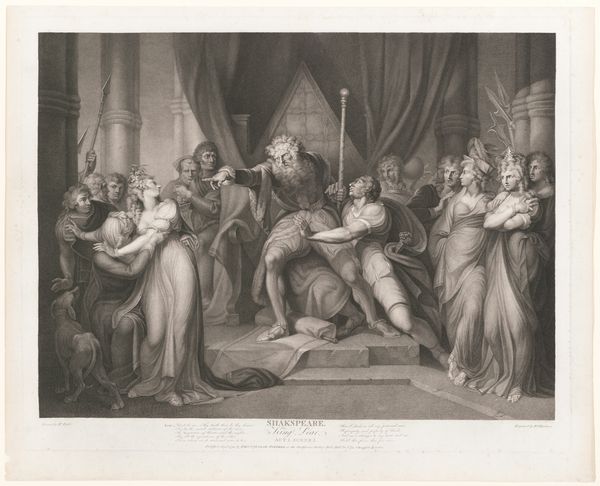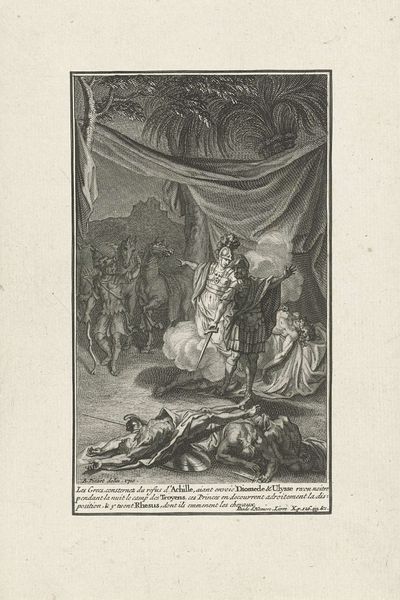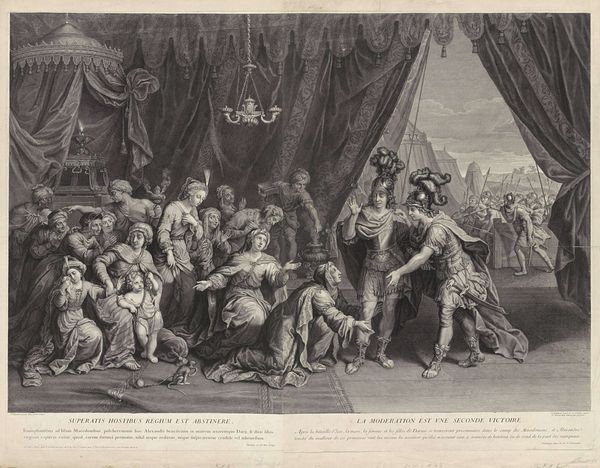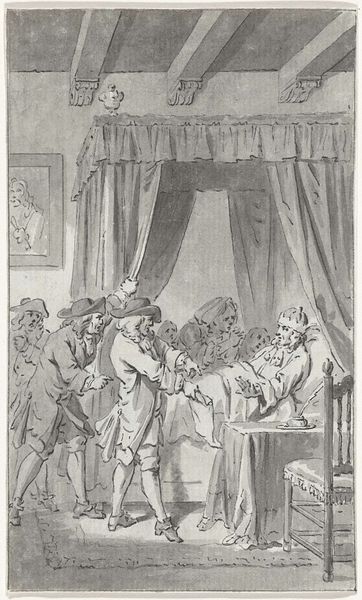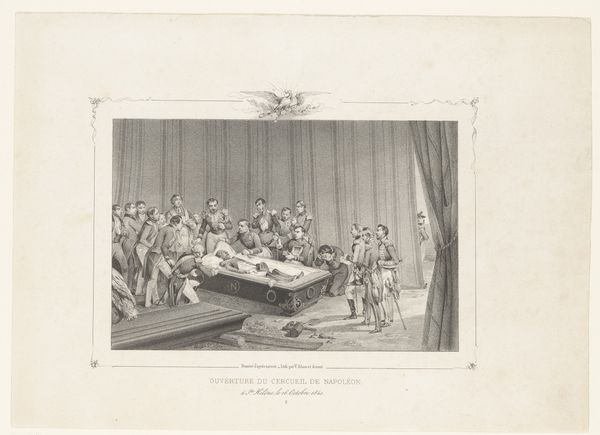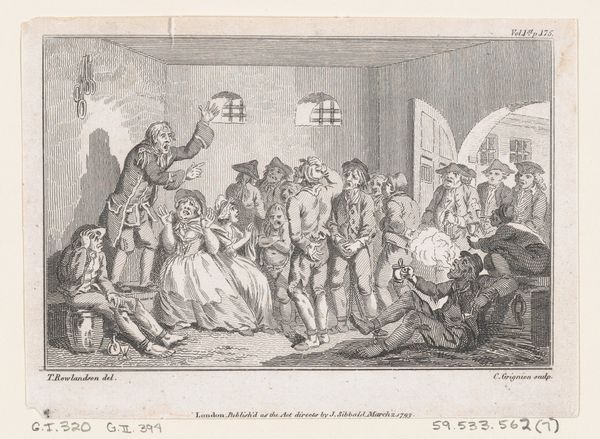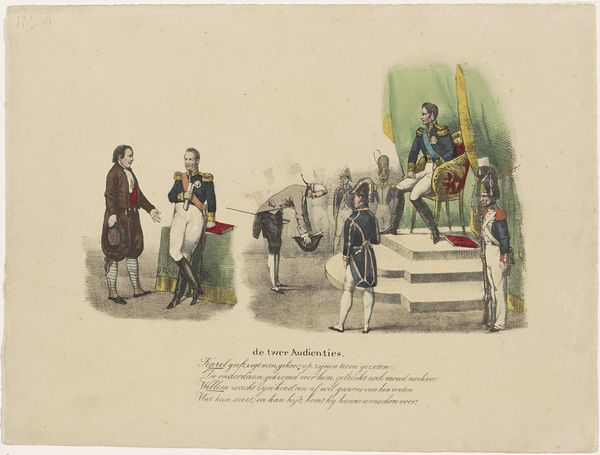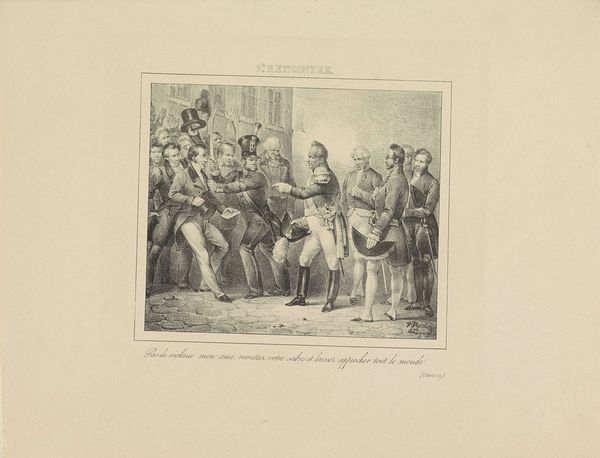
print, engraving
#
portrait
#
narrative-art
# print
#
history-painting
#
academic-art
#
engraving
Dimensions: height 250 mm, width 332 mm
Copyright: Rijks Museum: Open Domain
Curator: This is an engraving titled "Birth of Henri d'Artois, 1820," created sometime between 1820 and 1825. Editor: My initial reaction is to the stark contrast in light and shadow achieved in this monochromatic work. The emotional temperature of the scene feels very high, very dramatic. Curator: Exactly. Think about the sociopolitical context of Henri's birth. He was literally brought into the world as a supposed heir to the throne and a symbol of the Bourbon Restoration after the French Revolution. The palpable drama captures the weight of expectation that burdened him. Editor: And observe the sheer detail achieved through engraving! It speaks to the immense labor invested in portraying this specific political narrative, this moment of royal continuity, for mass distribution. How might these prints have functioned in public spaces? Were they intended as straightforward propaganda, or something more complex? Curator: They certainly served as a kind of royalist image campaign. Beyond just a simple announcement, it attempts to reinforce the legitimacy and enduring power of the monarchy. Look closely at the central figures – the presentation of the newborn heir. This wasn't simply about birth; it was a performance of dynastic strength during an extremely turbulent time. Editor: Focusing on the material process again – engraving allowed for multiples. Considering who consumed these images and in what setting could show the way perception was impacted or possibly manufactured regarding social structure. It further solidifies ideas around class. Curator: Precisely. The composition intentionally evokes classical history painting – even as it aims to create a national myth. And this intersects with issues of gender. Note the positioning of the Queen in the background. How do you think her role and identity fit into the piece's intended message? Editor: I see your point. Looking closer, I have to say the crispness with which this print was created adds layers. There are so many factors when evaluating historical relevance alongside an artistic element and the relationship can be dynamic. Curator: I completely agree, seeing the history from varied, but also opposite sides allows for an even greater, and full perspective of its origins, uses, and even failures. Editor: Yes, definitely more rewarding to approach works this way.
Comments
No comments
Be the first to comment and join the conversation on the ultimate creative platform.
